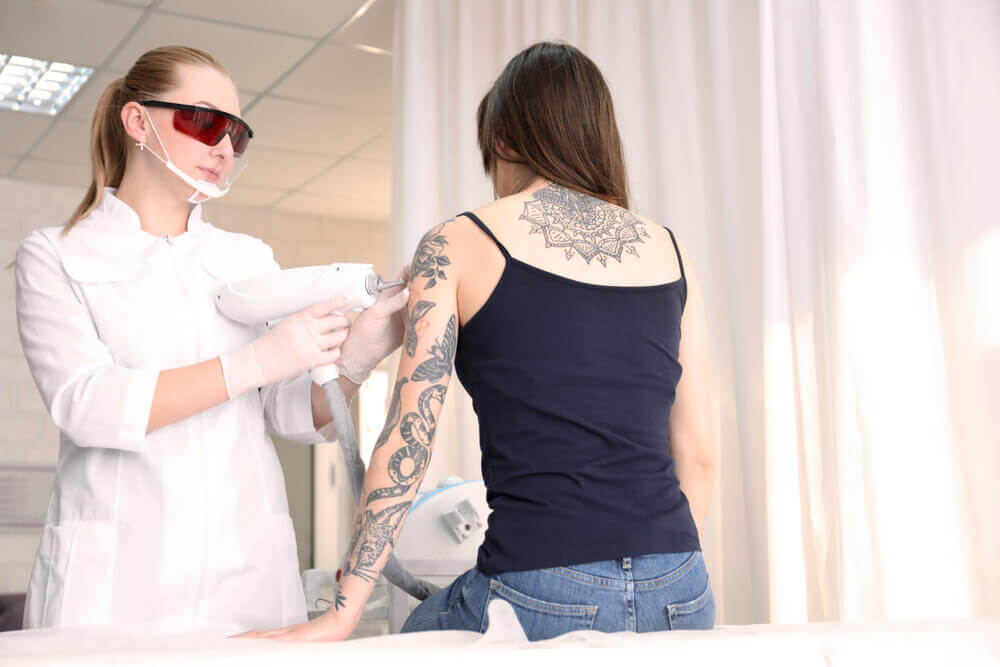Tattoos can be deeply personal and meaningful, but as time passes, they might no longer align with your identity or desires. Whether it's a change in taste, a shift in personal values, or a reminder of a past that you want to leave behind, removing a tattoo is a process many consider. Among the various methods available, laser tattoo removal stands out as a prominent choice for those seeking a fresh start for their skin. This article explores the intricacies of laser tattoo removal, shedding light on how this technology can provide a clean slate.
Understanding Laser Tattoo Removal
Laser Tattoo Removal in Dubai is a non-invasive procedure designed to break down the ink particles embedded in the skin. The process uses high-intensity light beams to target the pigment of the tattoo. These lasers emit specific wavelengths that are absorbed by the tattoo ink, causing the ink particles to fragment into smaller pieces. The body's natural processes then work to remove these smaller particles over time.
This method has become increasingly popular due to its effectiveness and precision. Unlike other removal techniques, which may cause significant damage to the skin or leave visible scars, laser tattoo removal focuses on minimizing skin disruption while targeting the ink.
How Laser Tattoo Removal Works
Laser tattoo removal involves several key steps to ensure the tattoo is effectively and safely removed. Here’s a breakdown of how the procedure works:
- Consultation and Assessment: Before starting the treatment, a thorough consultation with a qualified specialist is essential. During this assessment, the type of tattoo, ink colors, size, and location are evaluated to determine the appropriate laser technology and treatment plan.
- Preparation: The area of the tattoo is cleaned and, in some cases, numbed with a topical anesthetic to minimize discomfort during the procedure.
- Laser Application: The laser device is used to direct pulses of light at the tattoo. Each pulse targets the ink particles, breaking them down into smaller fragments. Different types of lasers may be used depending on the ink colors and depth of the tattoo.
- Post-Treatment Care: After the session, the treated area might experience some redness and swelling. Proper aftercare, including keeping the area clean and applying prescribed ointments, is crucial for optimal healing and to reduce the risk of complications.
- Healing and Results: The body's immune system gradually removes the fragmented ink particles. Multiple sessions are usually required, spaced several weeks apart, to achieve the desired result. Over time, the tattoo becomes less visible, eventually leading to its near-complete removal.
Factors Affecting Laser Tattoo Removal
Several factors can influence the effectiveness and duration of laser tattoo removal:
- Ink Color and Type: Different colors of ink absorb laser light differently. Black and dark inks are generally easier to remove, while colors like green and blue may require specific lasers or additional sessions.
- Tattoo Age: Older tattoos may have ink that has already spread and settled deeper into the skin, making removal more challenging. Newer tattoos often respond better to treatment.
- Skin Type and Color: The natural pigmentation of the skin can affect how well the laser targets the tattoo ink. Fairer skin tones typically respond better to laser treatment compared to darker skin tones.
- Tattoo Location: The location of the tattoo on the body can impact the removal process. Areas with good blood flow, such as the arms and legs, often heal faster than those with less circulation.
Recovery and Aftercare
Post-procedure care is vital to ensure proper healing and minimize potential side effects. Here are some general aftercare tips:
- Avoid Sun Exposure: Keep the treated area protected from the sun to prevent pigmentation changes and promote healing.
- Keep the Area Clean and Dry: Gently clean the area with mild soap and water, and avoid picking at scabs or blisters.
- Follow Professional Advice: Adhere to any specific instructions given by your specialist, including the use of ointments or creams to aid in healing.
- Stay Hydrated and Healthy: Maintaining overall health can support your body’s healing process.
Final Thoughts
Laser tattoo removal offers a viable solution for those looking to erase a past tattoo and start anew. Its advanced technology provides a targeted and effective approach to removing unwanted ink while aiming to preserve skin integrity. By understanding how the procedure works, the factors that influence its success, and the importance of proper aftercare, individuals can make informed decisions about their tattoo removal journey.





Comments